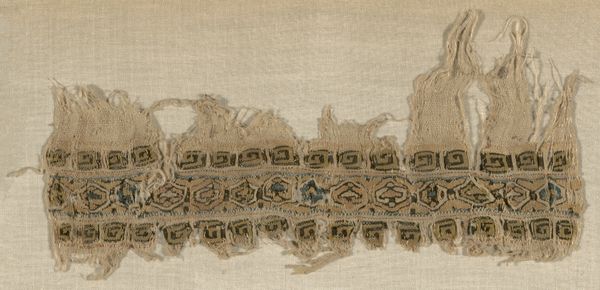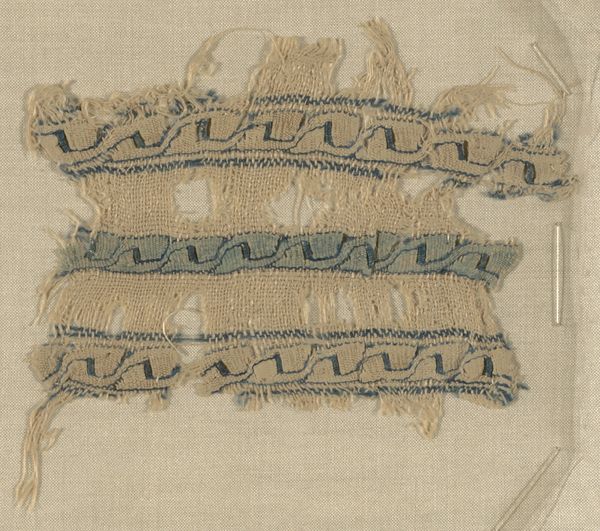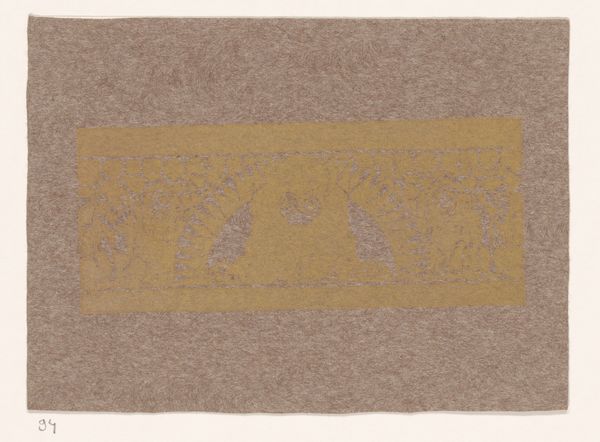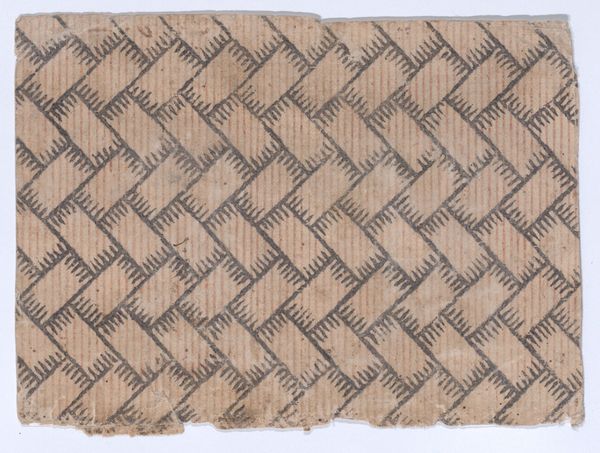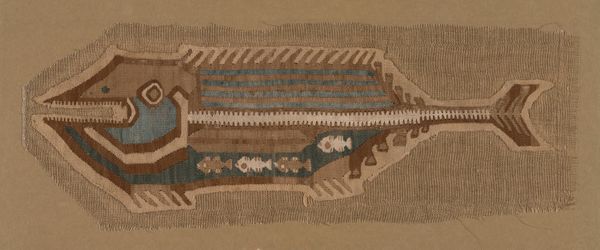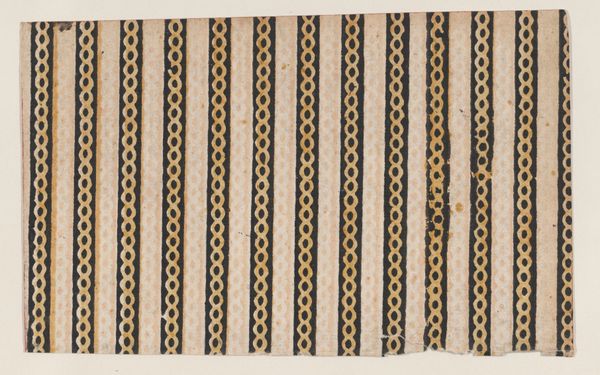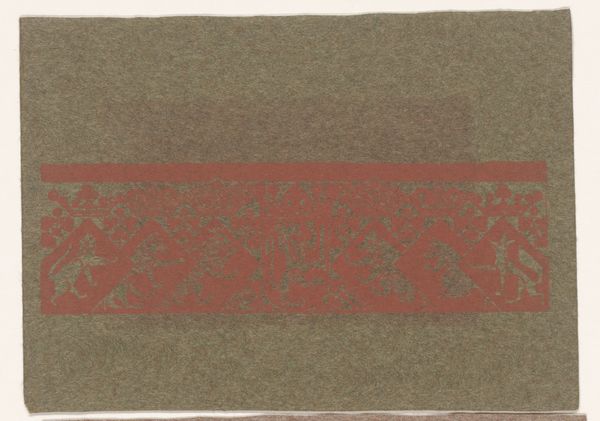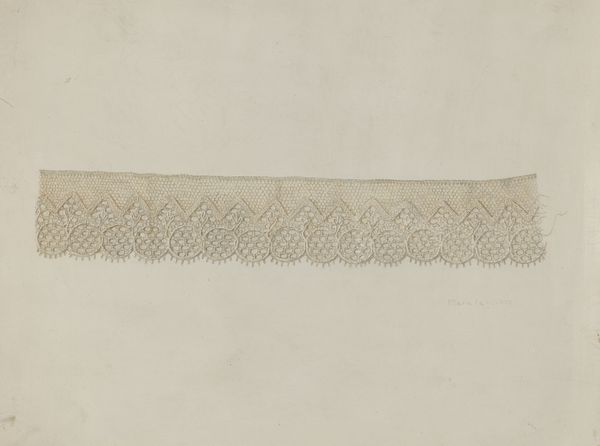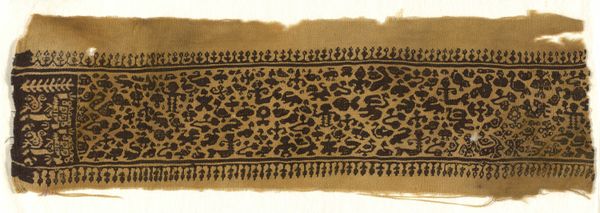
drawing, watercolor
#
drawing
#
arts-&-crafts-movement
#
watercolor
#
geometric
#
decorative-art
Dimensions: sheet (irregular): 4.1 × 10.1 cm (1 5/8 × 4 in.) mount: 30.2 × 46.3 cm (11 7/8 × 18 1/4 in.)
Copyright: National Gallery of Art: CC0 1.0
Curator: The Arts and Crafts movement prized handmade beauty, didn’t it? One finds that ethos richly evident in Charles Sprague Pearce's "Study for a Border Design," created between 1890 and 1897, using watercolor and drawing. It feels simultaneously modern and ancient. Editor: Immediately striking is its subdued palette, like a sun-baked fresco fragment unearthed after centuries. The repeated forms create a visual rhythm that's calming but with a definite sense of gravity. Curator: The stylized wave motif certainly evokes a connection to classical architectural ornamentation and geometric patterns of antiquity. Its recurrence might signal broader themes of harmony, continuity, and the cyclical nature of life, reflecting common beliefs in ancient art. Editor: Agreed. The wave’s curvilinear energy contrasts beautifully with the rigidity of those upright, rectangular forms below the topmost frieze. This interplay—between the organic undulation and structured repetition—holds the eye and begs contemplation. Curator: Consider the work in the context of the Arts and Crafts movement’s interest in reviving traditional crafts and its suspicion of industrialization. The very act of meticulously hand-drawing each element might have been seen as a rebellion against the soullessness of machine-made decoration, a reassertion of human creativity and care. Editor: It is fascinating to observe the delicate imperfections and minor asymmetries in the repeating designs. They add a handmade, distinctly personal dimension, which is quite unusual considering the formal context in which the study seems to reside. These seemingly small decisions are powerful. Curator: Absolutely, those subtleties enhance the border’s symbolic weight. They seem to be carrying not just decorative potential, but the maker's values as well. Editor: This piece really invites you to consider how simple forms, thoughtfully arranged, can achieve a certain elegance and evoke surprisingly complex feelings and intellectual inquiries. Curator: For me, it echoes the timeless search for order, beauty, and meaning that connects us to so many eras. Editor: Indeed, and perhaps offers a meditative space in which to pursue it.
Comments
No comments
Be the first to comment and join the conversation on the ultimate creative platform.

